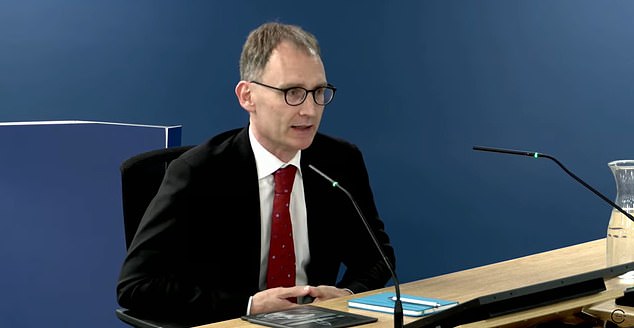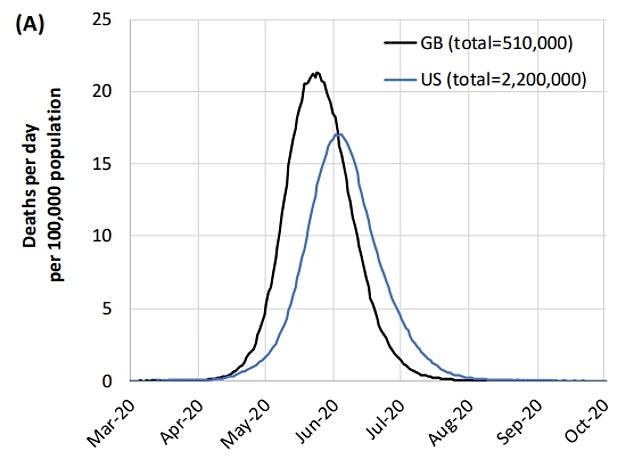Revealed: Covid modeling’s ‘big mistake’ on doomsday forcing ministers into lockdowns
Doomsday Covid modeling that sent ministers into lockdown had a ‘major flaw’, analysis suggests.
A mathematician replicated a simplified version of the kind of modeling done by experts advising the government during the pandemic, which showed that more than 80 percent of people would become infected without restrictions.
But a separate new analysis found that only around 20 per cent of the UK population would become infected in a single wave.
Dr. Samuel Johnson from the University of Birmingham used a model that took into account the fact that different people have different numbers of contacts.
For example, some people are more social or come into contact with a large audience through their work, while others hardly see anyone.

Professor Neil Ferguson’s modeling in March 2020 for then Prime Minister Boris Johnson suggested that 510,000 people in the UK would die from Covid without drastic action


The epidemiologist was heavily criticized for his team’s modeling of the Covid pandemic. Their work suggested that 500,000 Britons would die if nothing was done to stop the spread of the virus (shown in the graph) and that 250,000 deaths would occur if two-thirds contracted Covid.
This suggests that models used during the pandemic, such as Professor Neil Ferguson’s infamous one, were too inaccurate to rely on, Dr Johnson said.
He did not exactly replicate the lockdown modelers’ calculations, but used a much simplified version.
However, his predictions reflected experts’ warnings that the vast majority of people would become infected without lockdowns, suggesting his model was broadly similar.
The original models only took into account people with a higher number of contacts – such as healthcare workers.
He says the models could have been much more accurate if they had taken into account the huge difference in contacts between different people, and the role of ‘superspreaders’ that many people perceived.
This additional information may not be able to be included in detail and is very complex, but could be modeled or better accounted for statistically in the future.
Anyway, Dr. Johnson wants more research to tackle this ‘big mistake’ in preparation for future epidemics.
Dr. Johnson is not an epidemiologist and therefore does not normally analyze pandemics and diseases, but is an expert in complex systems.
He said: ‘My view, based in part on the results of this research, is that the world is more complicated than the models used during the pandemic.
‘Experts might have thought that if they added all these ingredients and put them into a computer, they could predict what would happen.
‘But they probably got carried away and there was too much reliance on models when it came to lockdowns and severe restrictions.
‘You can see this when you look at countries without lockdowns, where the predicted results were not expected.
‘This is what the Covid inquiry should be looking at, rather than focusing on scandals and WhatsApp messages.’
Professor Ferguson’s terrifying modeling from March 2020 warned that 500,000 Britons would die unless tougher measures were taken to stop the spread of the virus.
It prompted Boris Johnson to adopt draconian restrictions, leaving the country told to ‘stay at home’.
It would take months before vaccines – considered the only safe way out of the pandemic – are deployed.
Professor Mike Tildesley, an infectious disease modeler at the University of Warwick and member of a SAGE sub-advisory panel focused on projections, said the problem had been known “for decades” and describing it as a bug was “extremely misleading”.
He said: ‘This is an extremely well-researched area and as such the results in this paper are not new.’
Fellow modeler Professor Adam Kucharski, from the London School of Hygiene & Tropical Medicine (LSHTM), said Dr Johnson’s article repeated a ‘common misunderstanding’.
